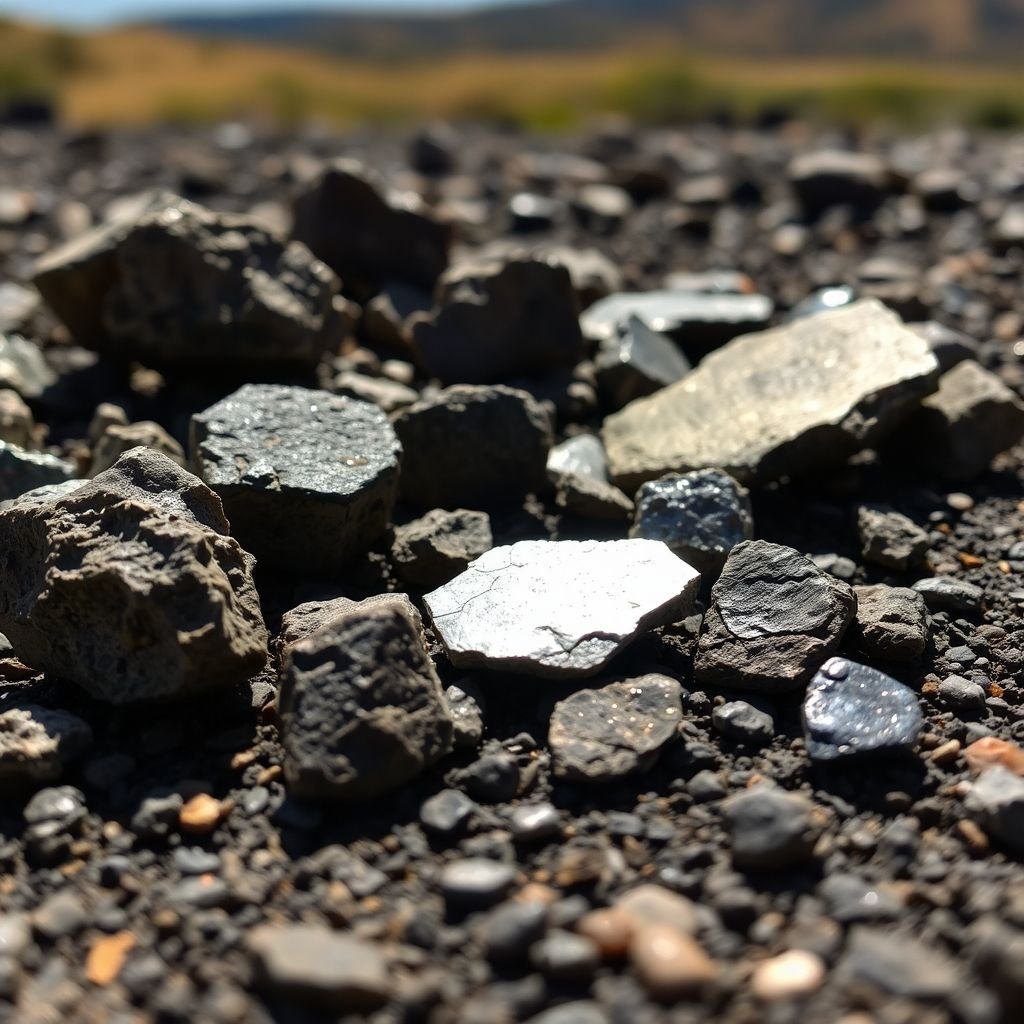In a groundbreaking venture, a tiny robot has ventured into the depths of the ocean, reaching places previously thought unreachable. This remarkable feat not only showcases the advancements in technology but also offers a glimpse into the hidden wonders of the abyss. As we explore the ocean’s depths, we uncover secrets about marine life, ecosystems, and the effects of climate change, all while highlighting the importance of ecological stewardship. Join us as we delve into the significant findings and future possibilities that arise from this tiny robot’s journey into the deep.
Key Takeaways
- Robotic innovations are reshaping our understanding of the ocean.
- The tiny robot has revealed unique adaptations of deep-sea creatures.
- Climate change impacts are being monitored through deep-sea exploration.
- Collaborative efforts in marine science are essential for future discoveries.
- Protecting deep-sea ecosystems is crucial for maintaining biodiversity.
The Role of Technology in Ocean Exploration

Ocean exploration has always been limited by the sheer difficulty of accessing the deep sea. The pressure, the darkness, the cold – it’s a hostile environment for humans. That’s where technology comes in. It’s not just about building better submarines; it’s about creating tools that can withstand these conditions and gather data in ways we never thought possible.
Advancements in Robotic Design
Robots are now the workhorses of ocean exploration. They can go deeper, stay longer, and collect more data than any human could. We’re talking about remotely operated vehicles (ROVs) tethered to ships, and autonomous underwater vehicles (AUVs) that can map the ocean floor independently. The materials used are getting stronger and lighter, the batteries last longer, and the cameras are getting better. It’s a constant process of refinement, pushing the boundaries of what’s achievable.
AI Integration in Submersibles
AI is changing the game. Imagine a submersible that can identify new species, analyse water samples, and even make decisions about where to explore next, all without human intervention. AI algorithms can process huge amounts of data from sensors and cameras, spotting patterns and anomalies that humans might miss. It’s like having a super-smart research assistant on board, constantly learning and adapting to the environment.
Challenges Faced by Robotic Oceanographers
It’s not all plain sailing, of course. Building robots that can survive in the deep sea is incredibly difficult. The pressure is immense, and even the smallest leak can be catastrophic. Communication is also a challenge; radio waves don’t travel well through water, so we have to rely on acoustic signals, which are slow and unreliable. And then there’s the cost. Developing and deploying these technologies is expensive, and funding can be hard to come by.
Despite these challenges, the potential rewards are enormous. By using robots to explore the ocean, we can learn more about our planet, discover new resources, and protect the marine environment for future generations.
Discoveries from the Abyss
Unique Adaptations in Deep-Sea Fauna
The deep sea is a pretty weird place, and the animals that live there are even weirder. Think about it: crushing pressure, total darkness, and barely any food. So, it’s no surprise that creatures have evolved some seriously strange ways to survive. For example, some fish have massive eyes to catch any scrap of light, while others are completely blind and rely on other senses. Bioluminescence is also super common, with animals using light to attract prey, find mates, or even confuse predators. It’s a whole different world down there, and we’re only just starting to understand how these animals manage to thrive in such extreme conditions. The adaptations are truly remarkable.
New Species and Ecosystems
One of the most exciting things about exploring the abyss is the constant discovery of new species. Every time we send a submersible down, it seems like we find something completely new to science. These aren’t just slightly different versions of things we already know; we’re talking about entirely new families and even phyla of organisms. And it’s not just individual species, but whole new ecosystems that are being discovered. Hydrothermal vents, for example, are like underwater oases that support unique communities of life that don’t rely on sunlight at all. The potential for further discoveries is immense.
Insights into Marine Biodiversity
Studying the abyss isn’t just about finding cool new creatures; it’s also about understanding the bigger picture of marine biodiversity. The deep sea is connected to the rest of the ocean in ways we’re only beginning to grasp, and what happens down there can have a big impact on the surface. For example, deep-sea organisms play a role in carbon cycling, helping to regulate the Earth’s climate. By studying the biodiversity of the abyss, we can learn more about how the ocean works as a whole and how to protect it. It’s important to understand the deep seabed to protect it.
The deep sea is the largest habitat on Earth, yet it remains one of the least explored. Understanding its biodiversity is crucial for effective conservation efforts and for predicting how the ocean will respond to future changes.
The Impact of Climate Change on Deep-Sea Life

Climate change isn’t just about warmer summers; it’s shaking up the whole planet, even the parts we can’t easily see. The deep sea, once thought to be immune, is now feeling the heat – literally. Changes in temperature, acidity, and oxygen levels are starting to have a real impact on the creatures that call the abyss home. It’s a bit like finding out your favourite quiet café is now hosting a rock concert every night – things are changing, and not necessarily for the better.
Monitoring Environmental Changes
We need to keep a close eye on what’s happening down there. Robotic oceanographers are becoming our eyes and ears in the deep, tracking ocean acidification and temperature shifts. It’s like having a network of weather stations, but instead of measuring rain, they’re measuring the health of the ocean. This data helps us understand how quickly things are changing and where the biggest problems are brewing.
Understanding Species Resilience
Some deep-sea creatures are tougher than others. Figuring out how they survive in such extreme conditions could give us clues about how other species might adapt to climate change. It’s like studying the ultimate survivalists to learn their secrets. Are there specific genes or behaviours that help them cope? Can we use this knowledge to help other marine life? These are the questions scientists are trying to answer.
The Role of Deep-Sea Organisms in Climate Research
Deep-sea organisms aren’t just passive victims of climate change; they also play a role in the global carbon cycle. They help to store carbon, which affects the amount of greenhouse gases in the atmosphere. If these ecosystems are disrupted, it could have a knock-on effect on the entire planet. It’s like finding out that your local park is actually a giant carbon sink – you’d want to protect it, right? Understanding this role is key to predicting future climate scenarios.
The deep sea is a complex and interconnected system. Changes in one area can have far-reaching consequences. We need to study these ecosystems to understand how they function and how we can protect them.
The Future of Deep-Sea Exploration

It’s easy to forget that we know more about the surface of Mars than we do about our own ocean floor. That’s a bit mad, isn’t it? But things are changing, and the future of deep-sea exploration looks pretty exciting. We’re on the cusp of some serious breakthroughs, driven by tech and a growing desire to understand what’s down there.
Potential for New Discoveries
The ocean’s depths remain largely uncharted, holding the potential for discoveries that could reshape our understanding of life on Earth. Think about it: new species, unique ecosystems, maybe even geological formations we can’t even imagine yet. With an estimated 90% of the ocean still unexplored, the possibilities are pretty much endless. The blend of artificial intelligence with ocean exploration leads us to an exciting question: Could we be on the threshold of discovering entirely new species and ecosystems lurking in the abyss?
- New extremophile organisms
- Undiscovered hydrothermal vent communities
- Novel biochemical compounds with medicinal potential
Collaborations in Marine Science
Deep-sea exploration isn’t a solo mission; it needs teamwork. We’re talking about scientists, engineers, and policymakers all working together. International collaborations are becoming more common, sharing data and resources to accelerate the pace of discovery. It’s about pooling knowledge and expertise to tackle the big questions. For example, institutions like the National Oceanic and Atmospheric Administration are key for ongoing conservation and educational initiatives.
Ethical Considerations in Ocean Exploration
As we venture further into the deep, we need to think about the impact we’re having. It’s not just about discovery; it’s about protecting these fragile environments. We need to develop guidelines and regulations to ensure that exploration is done responsibly and sustainably. We don’t want to damage these ecosystems before we even understand them.
We must balance the pursuit of knowledge with the need to protect the deep sea. This means minimising disturbance, avoiding pollution, and ensuring that any exploitation of resources is done in a way that doesn’t harm the environment. It’s a big responsibility, but one we can’t afford to ignore.
The Importance of Ecological Stewardship

It’s easy to get caught up in the excitement of exploring the deep sea, especially with cool robots doing the work. But we can’t forget that with discovery comes responsibility. We’re poking around in a place we barely understand, and it’s vital we don’t mess it up.
Protecting Deep-Sea Ecosystems
Deep-sea ecosystems are incredibly fragile. They’ve evolved over millennia in stable conditions, and they’re not equipped to handle sudden changes. We need to be super careful about how our activities, like mining or even scientific research, might affect them. It’s not enough to just avoid obvious damage; we need to think about the long-term consequences of our actions.
The Role of Robotics in Conservation
Robots aren’t just for exploration; they can also be a big help in conservation. For example:
- Monitoring pollution levels in real-time.
- Mapping sensitive habitats to prevent damage.
- Collecting data on species populations without disturbing them.
Using robots for conservation means we can get a better understanding of these ecosystems and protect them more effectively. It’s about using technology responsibly to minimise our impact.
Public Awareness and Education
Most people don’t think much about the deep sea. It’s out of sight, out of mind. But it’s connected to the rest of the planet, and what happens there affects us all. We need to raise awareness about the importance of these ecosystems and the threats they face. This could involve:
- Creating educational resources for schools.
- Supporting documentaries and other media that showcase the deep sea.
- Encouraging citizen science projects that allow people to get involved in research.
Ultimately, protecting the deep sea is about changing people’s attitudes and behaviours. If we can get people to care about what happens in the abyss, we’ll be much more likely to protect it.
The Journey of the Tiny Robot
Design and Functionality
The development of this miniature robot represents a significant leap forward in ocean exploration technology. The robot, about the size of a suitcase, is engineered to withstand the immense pressures at the ocean’s greatest depths. It uses smart metallic actuators, converting water pressure into propulsion, enabling it to swim, slide, and even crawl along the seabed. This innovative design allows for unprecedented access to previously unreachable areas.
Mission Objectives and Achievements
The primary objective of the tiny robot’s mission was to explore the Mariana Trench, the deepest point on Earth. The mission aimed to collect data and samples from this extreme environment, providing insights into the unique life forms and geological features found there. The robot successfully reached depths of 10.7 kilometres, withstanding pressures equivalent to 1,000 atmospheres. deep-sea exploration technology It gathered data on water chemistry, temperature, and the presence of any biological activity.
Here’s a summary of the mission’s key achievements:
- Successfully reached the bottom of the Mariana Trench.
- Collected water and sediment samples.
- Captured high-resolution images and video footage.
- Demonstrated the feasibility of using small robots for deep-sea exploration.
Data Collection and Analysis
The data collected by the tiny robot is currently undergoing analysis by a team of scientists. This includes examining the water and sediment samples for microbial life, analysing the images and videos for new species, and studying the geological features of the trench. The data is expected to provide valuable insights into the biodiversity and geological processes of the deep sea. The robot can conduct repetitive tasks like sampling marine life and taking detailed observations.
Initial findings suggest the presence of unique microbial communities adapted to the extreme conditions of the Mariana Trench. The analysis is ongoing, and further results are expected to be published in the coming months.
The Future Is Deep
As we wrap up our journey into the depths of the ocean, it’s clear that these tiny robots are doing more than just taking pretty pictures. They’re helping us uncover the secrets of the deep, revealing strange creatures and ecosystems that we never knew existed. This isn’t just about science; it’s about understanding our planet better. With so much of the ocean still unexplored, these robotic explorers are like tiny adventurers, pushing the boundaries of what we know. They remind us that there’s still a lot to learn and discover. As we look to the future, the partnership between technology and our curiosity could lead to some amazing discoveries, helping us appreciate the wonders of the ocean and the importance of protecting it.
Frequently Asked Questions (FAQ)
What is a robotic oceanographer?
A robotic oceanographer is a type of machine or underwater vehicle that explores and studies the deep ocean. These robots have special tools and smart technology that help them gather and understand data about the ocean.
How do robotic oceanographers help in discovering new species?
Robotic oceanographers can reach parts of the ocean that are hard for humans to explore. They collect samples and images, which can reveal new kinds of animals and plants that live in the deep sea.
What are some challenges faced by these robots?
Robotic oceanographers face many difficulties, such as the extreme pressure found deep underwater, which can damage their equipment. They also have to work in complete darkness, making it hard to see where they are going.
How does climate change affect deep-sea life?
Climate change can change the conditions in the ocean, which might harm the creatures that live there. Robotic oceanographers help scientists keep track of these changes and understand how deep-sea animals adapt.
What future discoveries might we make in the deep sea?
There is still a lot we don’t know about the deep sea. With new technology, we might find new species, learn more about how ecosystems work, and understand more about our planet.
Why is it important to protect deep-sea ecosystems?
Deep-sea ecosystems are vital for the health of our planet. Protecting them helps maintain biodiversity and supports the overall balance of marine life, which is crucial for our environment.









